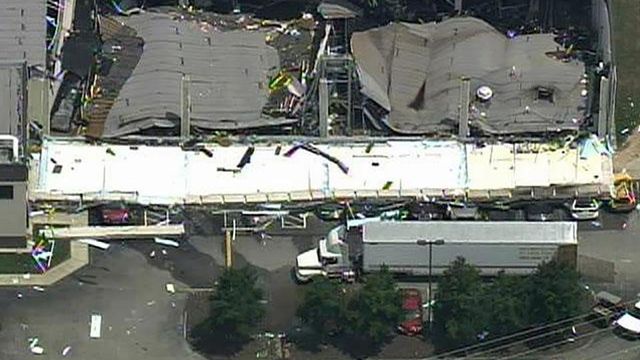Scars finally healing decade after Garner ConAgra plant explosion
The day began like most others in the ConAgra Foods Inc. plant in Garner that June day a decade ago, with workers on productions lines rolling out and packaging Slim Jim jerky to be shipped to convenience stores and other outlets across the country.
But June 9, 2009, quickly became a day unlike any other at the plant.
"We've had an explosion and a collapse, and we need all the people you can send," a man told a 911 dispatcher. "Oh my God, this is horrible."
An explosion rocked the plant at about 11:30 a.m., blowing one wall into the parking lot and caving in a portion of the roof. Hundreds of workers scrambled to get out, but some were burned in the blast and many others suffered from exposure to toxic fumes from ammonia leaks.
"What I saw, heard was this boom, and the ceiling start coming down, and we all start running," said Gail Ruffin, who wasn't injured. "Everyone was trying to get to the exit door. ... I was just trying to get out, and then we just seen people that was burned – blood all over them."
ConAgra workers Barbara McLean Spears, 43, of Dunn, and Rachel Mae Poston-Pulley, 67, and Louis Junior Watson, 33, both of Clayton, died in the explosion. Curtis Ray Poppe, 55, of Stony Point, a contractor working at the plant, died five months later from his injuries.
Watson, a member of ConAgra's safety team, died when he was crushed by debris after having run back inside the plant to rescue a co-worker, according to witnesses.
Investigators from the federal Bureau of Alcohol, Tobacco, Firearms and Explosives determined that a gas leak caused th explosion, and a team from the U.S. Chemical Safety Board pinpointed the leak to a natural gas line for a new industrial water heater that had been purged on the morning of the explosion to remove air from the line.
The CSB said contractors working on the gas line vented the purged gases inside the plant instead of outside, creating "a flammable gas cloud" that exploded. They were never able to determine what sparked the gas because of the extent of the damage in the building.
"It could have been anything that could have created a spark," ATF agent Earl Woodham said.
The families of the ConAgra workers killed in the blast sued Poppe's company, Energy System Analysts, and other contractors for the blast, and the state Department of Labor cited ConAgra and Energy System Analysts for workplace safety violations.
ConAgra resumed Slim Jim production at the plant six weeks after the explosion.
"All I remember is fire going across my head. After that, I don't remember anything else. When I came to, I was actually outside,” Johnetta Reddick said at a dedication ceremony when the plant reopened. “When I ride by and look at the building ... I thank God. Nobody but God pulled us out of there.”
But the work didn't last long. By November of that year, ConAgra had laid off about 300 of its 750 employees, and the following March, the Omaha, Neb.-based company said it would shut down the plant altogether by May 2011, moving Slim Jim production to Troy, Ohio.
"It's the end of an era," Garner Mayor Ronnie Williams said when the plant closed. "ConAgra has been a corporate citizen providing good-paying jobs and benefits to a lot of people for well over 40 years."
Indeed, Slim Jims and other packaged meat products had been such a part of the area that the road the plant had been on was named Jones Sausage Road.
"It was certainly a dark day in Garner’s history; one we’ll never forget," Williams said on Monday. "Our thoughts remain with all those affected by the tragedy."
In an effort to make up for the closure, ConAgra donated the 106-acre plant site to Garner and gave $2.5 million to the town to help build a community center.
Garner eventually razed the remnants of the plant and marketed the industrial site to an array of potential businesses before finally persuading Amazon last year to build a $200 million distribution center there. The center, expected to employ 1,500 people, will open later this year.












